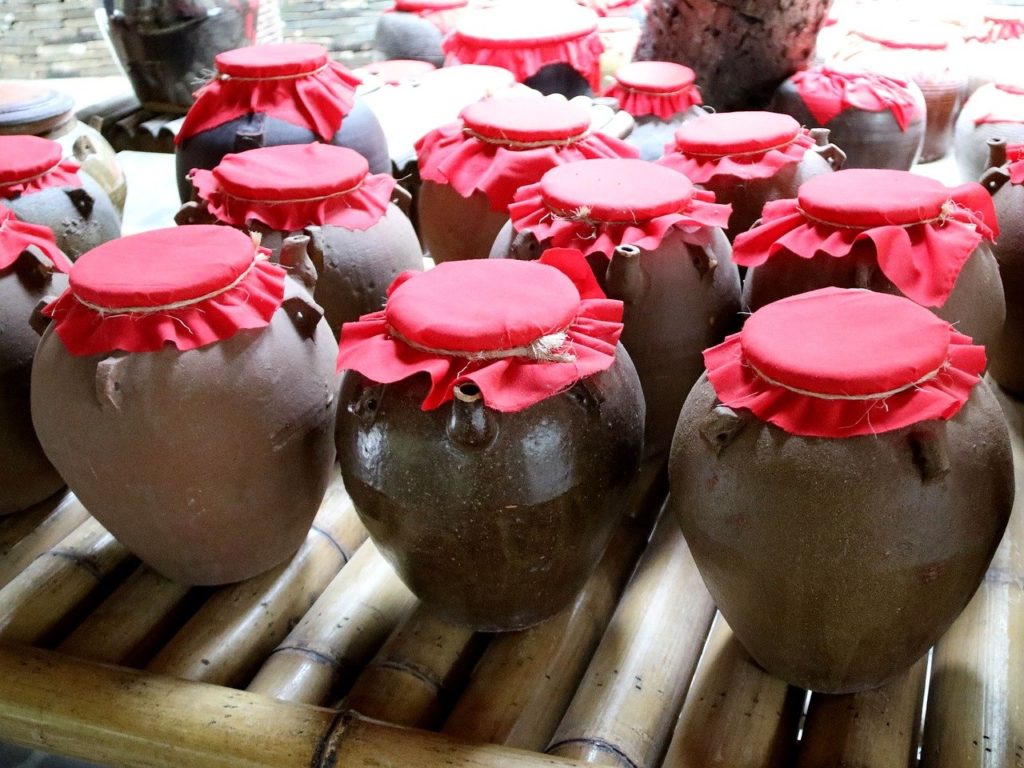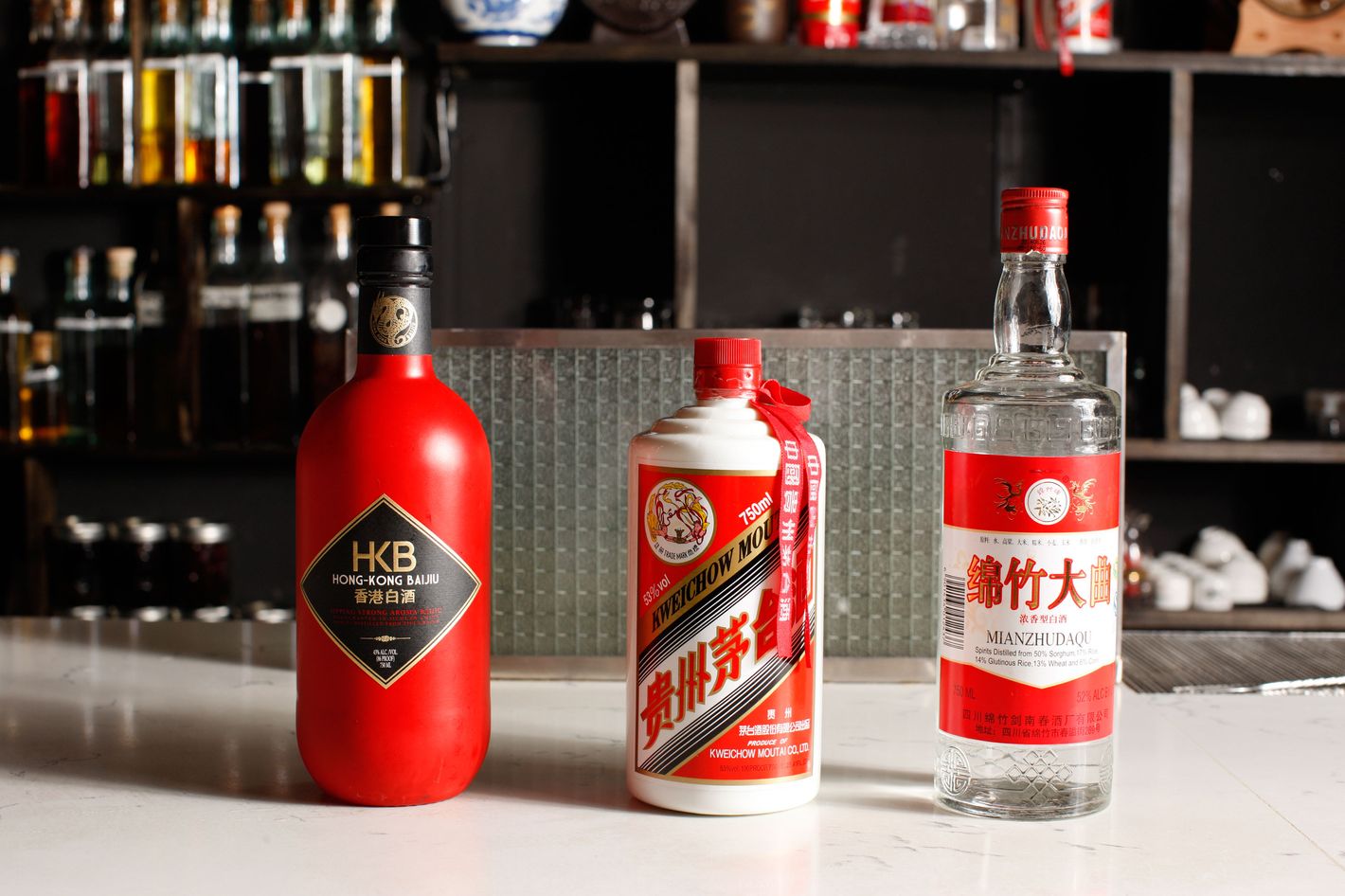Many drinks from Asia are “new” – not counting, of course, plum wine and sake, which were popular in the late 20th and early 21st centuries. We decided to find out more about the novelties and talked about them with Alexei Trunov, head barman and sommelier at Balzi Rossi.

Chinese wine
Now common grape varieties in China are European or international. The reds are cabernet sauvignon and merlot, while chardonnay is white. Plus rare varieties like Marcelan or white vidal grapes from North America. It’s used in China to make ice wine – “ice wine”. It is made from berries harvested after the first frosts.
China is thought to be at the top of the list in terms of the number of grapes grown – 5th in terms of plantings. However, a large proportion of the grapes grown are for food purposes, as is the case in Turkey, where many varieties of grapes are non-technical. These grapes are mainly consumed there for food and juices.
That said, quality wine is becoming a hot trend in China. The Rothschild family, bankers and public figures in the country have their own vineyards. Also, members of the famous French winemaking family of Michel Laurent have recently become consultants to some of China’s wineries.
Terroir* and wine stylistics are still being sought by Chinese winemakers, but they are already developing by leaps and bounds. For example, the country has producers who produce as much wine in a day as their Italian colleagues do in a year!
Probably in a few years experts will give rather high marks to Chinese wines, but this is just a forecast. One should not forget the specifics of the economy, which keep up with hedonism in wine drinking. China is very active in buying wines from Bordeaux in France, Napa Valley in the USA and is already starting to look closely at wines from Italy and Spain. One can imagine the volume of this country’s purchases. There is an opinion that this is the reason for such a jump in the price of Bordeaux wines. We know that the prices of these wines change like a stock exchange. Until recently, it was the Chinese and Japanese who were the most aggressive players in wine auctions.
Chinese baijiu
Baijiu is the most popular hard liquor in the world, with consumption levels estimated at around 10 billion litres. True, only formally – apart from a billion and a half Chinese, few people drink it. According to official figures, every Chinese drank 9.43 litres of baijiu in 2013, which is almost twice as much as the same figure for vodka in Russia. What is also surprising is that despite its mass production (in 2016, the Chinese sold 5 billion litres of the drink), it is also one of the most expensive spirits. A bottle of Moutai baijiu costs around 25,000 roubles. It’s a gastronomic drink for important meetings, celebrations and formal dinners.
Baijiu is a clear liquid with a peculiar odour. Its ethyl alcohol content is 40% to 60%. It can be made from a variety of products like grains (rice, sorghum, corn or any other crop), fruits (dates, bananas) and even plain sugary liquids (molasses). Premium baijiu is made from cereals. The raw material undergoes a complicated multi-stage fermentation process in special fermentation pits where future aromas are formed. Cheap baijiu is made from fruit and molasses but lacks the complex aroma of an expensive beverage.
For fermentation to begin, the Chinese use a special fermenting liquor – tsuyu. Different types of leaven exist, each affecting the style of the drink. There are four main categories of baijiu in terms of style: strong aroma baijiu, saucy aroma baijiu, light aroma baijiu and rice aroma baijiu.
As far as I know, the last stage of negotiations by one of our major suppliers to prepare for the sale of baijiu in Russia is now under way, and soon we will be able to see this drink on the shelves of our shops.
Kavalan whisky from Taiwan
This is a single malt whisky produced using the purest water from mountain springs which defines the style and quality of the drink. The whisky has a bright amber colour and a clean, fresh, elegant aroma with hints of orchid, mango, honey, vanilla, pear lollipops, coconut and chocolate – a very layered bouquet.
Taiwanese whisky differs from Scotch whisky in its maturation period. Due to the hot climate the flavours mature much faster and the 3 year old Taiwanese whisky is comparable to 15 year old Scotch whisky.
Interestingly enough, Kavalan Distillery, founded in 2006 in Yilan County, is the first and only distillery in Taiwan. It takes its name from the local Taiwanese aboriginal tribe.
Don Papa Philippine rum
The Philippines has a long history of cultivating the indigenous sugarcane variety Noble which later spread around the world. Sugarcane is harvested from November to May on the fertile island of Negros. The raw material arrives at one of the island’s old mills, which have been in existence since the 1920s. The sugar cane is milled and processed into sweet molasses, also known as “black gold”. The molasses is then moved to the Bago distillery, where it is fermented, distilled and poured into American bourbon barrels for further aging. The oak barrels are charred slightly beforehand, which allows the vanilla and fruity notes of the future natural dark rum to be expressed. The resulting rum is aged in the foothills of the Canlaon Mountains. The local hot and humid climate allows for accelerated aging. The loss of rum through the pores of the tree (pros call this part of the drink “angel’s share”) is only a maximum of 8%, which is very good! After a few years of aging, the spirits are selected, blended and bottled.
The result is Filipino rum, a light amber drink with notes of vanilla, cinnamon, sultanas and marmalade, with a long aftertaste. It is best consumed pure, with a little ice or as part of cocktails.
The distillery is named after Papa Ishio, a charismatic hero of the Philippines who expelled the Spanish from the island in the 1890s and defended the country’s independence.
Japanese soju vodka
Soju is Japan’s most popular alcoholic drink. It is made using unique Japanese technology from selected varieties of barley.
The process begins by adding koji malt (a type of mold) to the cleaned barley, which is then transformed into glucose. The yeast then steps in, transforming the glucose into alcohol. Water is added to the alcohol in order to get the right degree of alcohol. There are no other additives in the drink as koji makes it rich in flavour and fine in aroma.

